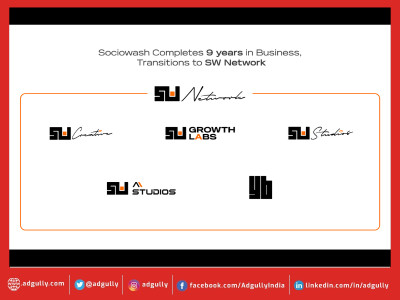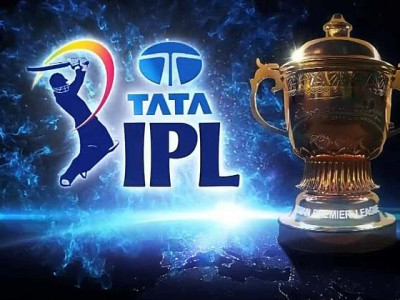In-depth: Adani + Ambani + Bodhi Tree = A fresh churn in the Indian media sector
The Indian media industry is in for a fresh churn as two of Asia’s richest men sharpen their focus on media. In April 2022, Mukesh Ambani’s Reliance and Viacom18 Media’, Ambani’s local joint venture with Paramount Global, entered into a strategic partnership with Bodhi Tree Systems, which is a platform of James Murdoch’s Lupa Systems and Uday Shankar, to form one of the largest TV and digital streaming companies in India. Bodhi Tree Systems is leading a fund raise with a consortium of investors to invest Rs 13,500 crore in Viacom18, to jointly build India’s leading entertainment platform and pioneer the Indian media landscape’s transformation to a “streaming-first” approach. Viacom18 owns and operates the suite of Colors TV channels and OTT platform, VOOT.
Meanwhile, Gautam Adani-owned Adani Enterprises last month announced the formation of AMG Media Networks, a wholly-owned subsidiary. The entity’s initial authorised and paid-up share capital will be Rs 1,000,000 per share. The corporation was formed on April 26, 2022. The new company will carry on the business of media-related activities, including publishing, advertising, broadcasting, distributing, etc., of content over different types of media networks.
In September 2021, Adani Group had brought on board veteran journalist Sanjay Pugalia as CEO and Editor-in-Chief to lead the Group’s media initiatives. He was earlier with Quint Digital Media, where he was President and Editorial Director. In March 2022, Adani Group agreed to acquire a minority stake in Raghav Bahl’s Quintillion Business Media. It was clarified that the deal was just for QBM, a digital business news platform that runs Bloomberg | Quint, and not for any of Quint Digital’s other digital media or media tech businesses, such as The Quint, Quintype Technologies, thenewsminute, or Youthkiawaaz.
These two recent developments will have far-reaching implications for the Indian media industry. Adgully reached out to a cross-section of industry experts to find out what kind of impact these major developments will have on India’s media ecosystem and how it will impact the Indian media industry.
Analysts feel that with Bodhi Tree’s investment, Viacom18 will be better equipped to bid for the media rights of the coveted Indian Premier League (IPL), which is up for grabs next month. And the synergies brought by the Murdoch-Shankar duo into the Indian media market, especially in the streaming space, will be unprecedented.
“This is the start of something big in the streaming market,” says CupShup Co-founder Sidharth Singh.
“In addition to the fact that both Viacom18 and Bodhi Tree have big names on their management like James Murdoch and Uday Shankar, the synergies that this association has the potential of are unparalleled. On the one hand, we have Jio Cinema, the on-demand streaming platform coming from the stable of Reliance, and on the other hand, Paramount Global, supplying its large global content to the platform. This unique combination of local as well as global content will definitely be very interesting phenomena to unfold,” points out Singh.
Diving deep into the strengths and formulation of key players, Carat India CEO Anita Kotwani points out that Viacom18 is amongst the leading players in the core linear television business with 38 channels across nine languages and a pan-India presence.
“Let’s see some basic facts here: Reliance Projects and Property Management Services, a wholly-owned subsidiary of Reliance Industries, has a significant presence in television, OTT, distribution, content creation, and production services. It will further invest Rs 1,645 crore. In addition, the popular JioCinema OTT app will be transferred to Viacom18. Paramount Global (formerly known as Viacom CBS), a leading global media and entertainment company comprised of iconic content studios, TV networks and streaming services including CBS, Showtime Networks, Paramount Pictures, Nickelodeon, MTV, Comedy Central, BET, Paramount+ and Pluto TV, will continue as a shareholder of Viacom18 and will continue to supply Viacom18 its premium global content,” says Kotwani.
The strategic partnership between Reliance, Bodhi Tree Systems, and Paramount Global is expected to shape the vision, strategy, and execution for its businesses, building on the strong existing foundation for innovation and distribution in the media and entertainment sector in India, she explains.
“Yes, the market is heating up with a plethora of OTT players, both regional and national players, and especially with news of Netflix (SVOD platform) wanting to explore an AVOD model. We will not be surprised if Amazon prime follows suit. So yet again, OTT players that have a strong content pipeline and the best of studios for producing content will win the battle in the longer run. If content is what drives consumption, then there would be some action seen on the TVOD space too,” adds Kotwani.
According to Himanshu Arora, Co-founder, Social Panga, a conglomerate picking up a stake in a media house is debatable in terms of its neutrality.
“However, what amazes me is James Murdoch-Uday Shankar’s Bodhi Tree Systems’s investment in Viacom18. We can see a paradigm shift here, which is happening in how people are consuming OTT and digital content these days. It’s all about great content and the content-creators that pull the consumers towards these platforms; therefore, media houses pumping money into the streaming market is an obvious move and it speaks volumes about how the content game is going to play a very significant role in future too,” says Arora.
It is good for the industry with increased ad revenue, feels Puretech Digital CEO Prashant Deorah. According to him, this decade has been the dawn of a new era in terms of content consumption on OTTs.
“This is the decade of 5G, where networks will be faster, cheaper, robust, and more reliable. We have already moved into an ecosystem where we are a ‘Streaming-First’ market which has the consumer spoilt for choice. With Viacom18 – Colors and Voot, which has a major play in the regional TV consumption, the industry will now move towards aggressively with lots of bespoke content creation for the audiences with the infusion of funds. This will naturally result in more people watching this content, more advertising revenues through these mediums, and thereby more growth for the overall industry,” says Deorah.
The streaming market
Bodhi Tree Systems’ investment in Viacom18 has a clear focus on India’s streaming market. Will it impact an already-fragmented streaming market?
According to Anita Kotwani, this strategic partnership of Reliance + Viacom and Bodhi Tree will form one of the largest TV and digital streaming companies in India. “The players and group companies entering the Indian media eco-system are known for their strong strategic investments in businesses that they see potential in,” she adds.
She further analyses, “The recently launched AMG Media Networks Limited conducts the business of media-related activities, including publishing, advertising, broadcasting, distributing, etc., of content across media. Also, in the last month, Adani Group acquired a minority stake in Quintillion Business Media Pvt Ltd, an indirect subsidiary of Quint Digital Media. This clearly indicates their serious intentions of foraying into news and publishing, in addition to advertising.”
If we analyse the reports and the game plan of Bodhi Tree, Kotwani adds, we see that they are investing $1.78 billion in Viacom18, which includes Paramount Global amongst its backers, as part of the partnership. “So, if the content is considered as King and distribution as Queen, then the synergies here are already inbuilt. Their game plan also involves their expertise and experience in bidding for the coveted IPL rights. The next bidding rights for IPL are expected to be almost 2X of what Star had acquired (16,346.5 crore). Viacom18 will hugely benefit from the strong track record that both Uday and James have. This will help build iconic brands in India and across the globe along with their expertise in the bidding of IPL rights,” she adds.
According to her, there is huge traction that we are seeing on large mergers that have been taking place recently. Disney-Star (18.6% viewership share) Zee- Sony (26.7% viewership share) against a Viacom (11.8% share without sports) with the Reliance and Network18 backing. “So, the game plan for them is to not only up their viewership share but also have a strong foothold in the streaming space which is another area that is going to see competitive brands actively participating to win wars on the 1 billion mobile screens in India,” she adds.
“Bodhi Tree is designed to invest in media and consumer technology opportunities in Southeast Asia, particularly focusing on India. On a large scale, they will be investing in technology that provides disruptive solutions to drive transformational outcomes in sectors with deep consumer engagement like media education and healthcare. The investment in tech and user experience will be integral to scaling up their OTT offering, and if it comes from the top experienced names, then we will not be surprised to see the interesting developments of Metaverse and NFTs inbuilt into their product offerings. This strategic partnership of Reliance + Viacom and Bodhi Tree will form one of the largest TV and digital streaming companies in India. A disruption like the Jio 4G launch is what tends to change consumer behaviour to a higher degree, with 5G and live streaming services in AVOD format seems to be a win-win for both the consumer and the media provider,” adds Kotwani.
She maintains that the potential of video advertising (market size of Rs 6,000 crore in India) will continue to grow faster vis-a-vis overall digital market and will be dominated by aggregators and sports-led OTT platforms. “So, Viacom18 would strengthen the Voot offering with Jio TV content and sports or there may be a separate app for streaming sports exclusively within the Indian market. This is a wait-and-watch game the outcome of which we will know only with time. As far as AdEx is considered, we are a market that is showing growth and will continue to do so for TV, with a faster growth rate for OTT,” says Kotwani.
A man in a hurry!
Adani is a man in a hurry, quips Sidharth Singh. He says that Adani has never hidden his ambition to challenge Ambani’s de facto status of India’s wealthiest man and his businesses are competing directly and creating wealth. Thus, he says, it is surprising that it took so long for Adani to foray into media business. Maybe the FICII-EY report that in FY 21, Indian ad business grew by 16.4% in CY 2020-21 provided the much-needed nudge to the billionaire, says Singh.
“Secondly, with the latest investment, Adani has also brought the battle right to Reliance’s turf. With its early acquisition of Quintillion Media, the straws in the wind were pointing at AMG going hawkish only on digital media and it acquired only that piece of Raghav Bahl-founded business. But with latest investment, it has made it clear that it would foray into advertising and broadcasting of content-related services. This directly pitches it against Reliance. Overall, it is good news for the industry as the entry of strong players not only makes the pie bigger but also help in prevention of monopoly.”
Fragmentation or not?
Bodhi Tree Systems’ investment in Viacom18 has a clear focus on India’s streaming market. How it will impact an already-fragmented streaming market?
In the entertainment industry, more options do not necessarily mean fragmentation, feels Prashant Deorah.
“It means that every person can find what she or he likes based on her or his interests. I think that's what is going to happen with the market. We can also expect to see some consolidation here over the next two to three years where some streaming platforms may get acquired while in some cases, popular shows may change the platforms based on viewership and reach. Personalisation is the key to how well can you tailor-make the viewing menu for your user. How do you keep the user hooked on to your platform?” he asks.
Deorah feels that the transition to a streaming-first media market in India has already begun. He feels that 5G will accelerate this and telecom service providers will have a huge role to play in the same.
Sidharth Singh says that the transition into a streaming-first media market in India is still at least five years into the future. “Yes, TV is declining and it does provide an opening for streaming platforms to latch onto the opportunity, still the low penetration of smart TVs into tier 2 and 3 cities is an hurdle that would take time for players to overcome. We would see India emerging as a streaming-first market but may be not so soon,” he adds.
Looking at the Bodh Tree’s system investment in Viacom18, they are clearly focused in terms of India’s ever-growing streaming market, says Himanshu Arora. “What I’m looking forward to seeing in the next few months and years is how we generate good content for OTT platforms to make sure that people are hooked up to it. Recently, Amazon revealed a bunch of titles and shared the first look of its new seasons from its catalogue. The curtain raiser was sure to increase the inquisitiveness among the people. It heated up the content market with respect to the OTT platforms. Personally, I’m looking forward to how YouTube will amplify this as YouTube is driven majorly by the content creators. If a lot of content is moving on to the OTT platforms then I guess YouTube might come up with an exclusive content format too,” says Arora.
Streaming-first market
Will we see the transition to a streaming-first media market in India in the days ahead?
This is already happening and is not something new, says Himanshu Arora. According to him, there is already a gradual shift happening in content consumption from television to digital platforms. “Only thing is that now we are seeing a pool of investments happening in those directions as people are seeing an ROI and ROAS coming from OTT and digital platforms.”
According to Vikram Sakhuja, Partner and Group CEO, Madison Media & OOH, media supply side is constrained by the total media consumed by Indians. While digital has grown, the overall media consumption we are finding that TV and Print GRP supply is showing signs of plateauing and declining respectively. On TV, I don’t expect new entrants to impact consumer behaviour, overall ad spend, or industry growth fundamentally. If they succeed they will take share from others rather than grow the pie. The result will be further fragmentation. On digital (streaming), I see an opportunity of providing a scaled alternative to YouTube. This has the potential to grow the digital streaming market, both in reach and time spent.
With regard to a streaming-first market, Anita says that the media and entertainment industry has been built around the audience, and the fragmentation of consumer behaviour needs new business and technology models.
Broadcasters, she says, need to adopt an operating model that helps them effectively cater to consumer demands, rather than the traditional Capex model, which is limited and inflexible in scope and scale. According to her, new consumer behaviours are unpredictable. The operating model needs technology that can provide the type of infrastructure that mirrors the new consumption patterns.
“The OTT streaming simplifies the operational infrastructure for broadcasters bringing back focus to storytelling and content. The two levers that will define the business model of OTT and content streaming are technology and content evolution. The content experience (immersive and interactive) is what will shape the business model. With technology convergence, the streaming of the media market in India will take shape. If it will be slow/fast-paced is something that we will know with time. While today revenues are earned from advertising, tomorrow other options like ecommerce integrations will emerge, and when this happens the economic and business models will be redefined both for the online and the offline world,” she explains.
Vikram Sakhuja feels that the streaming market is fragmented in terms of platforms but not necessarily viewership. “We can expect these new media owners to acquire rights to top programming to consolidate viewership share and use that to drive advertising.
As to whether if see the transitioning to a streaming-first media market in India in the days ahead, Sakhuja says it remains to be seen. The trend points towards linear TV giving way to on-demand streaming. However, TV is not going anywhere in a hurry, he says.
















Share
Facebook
YouTube
Tweet
Twitter
LinkedIn